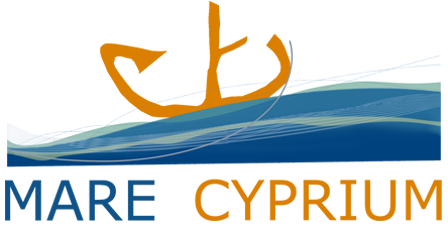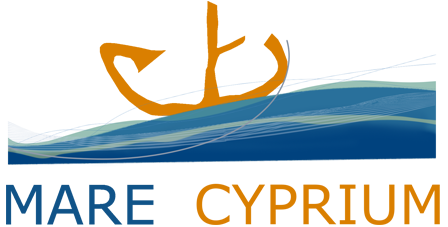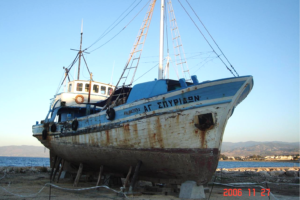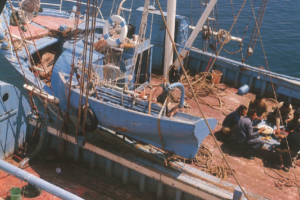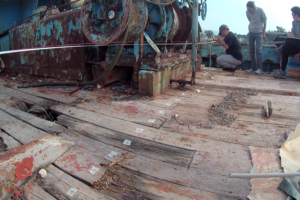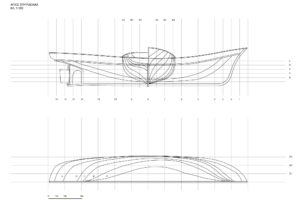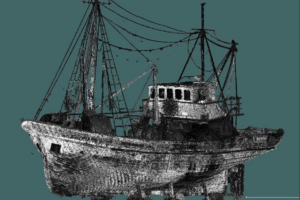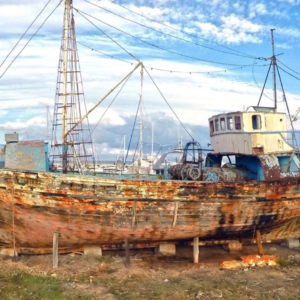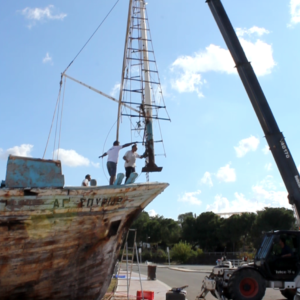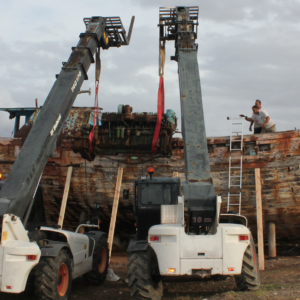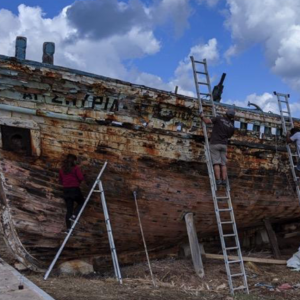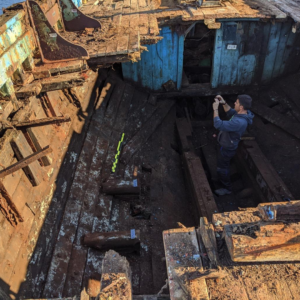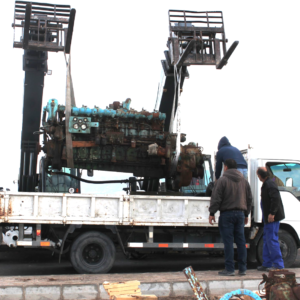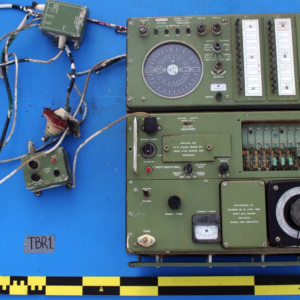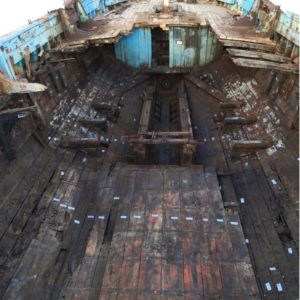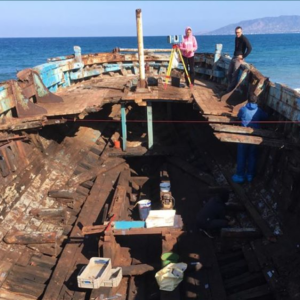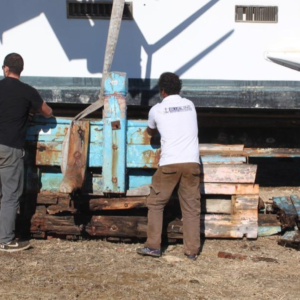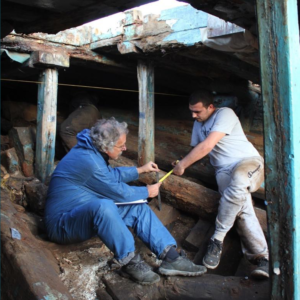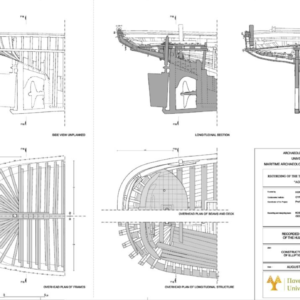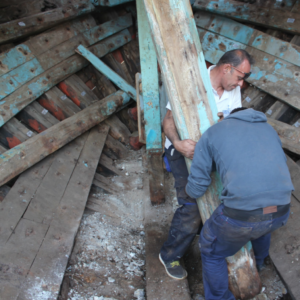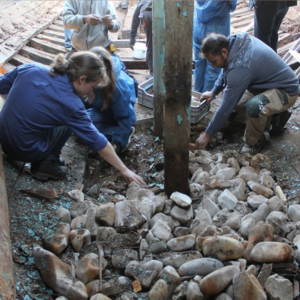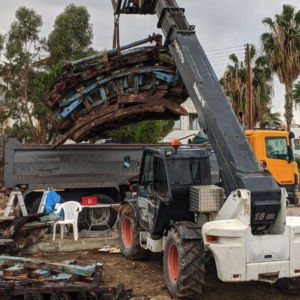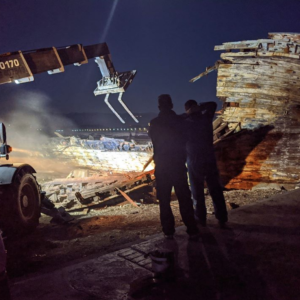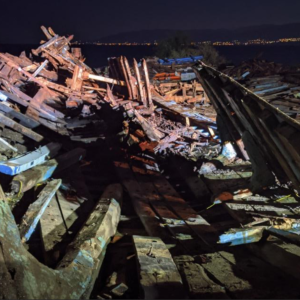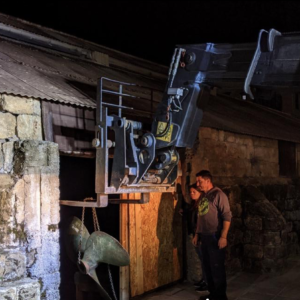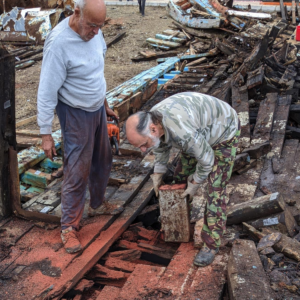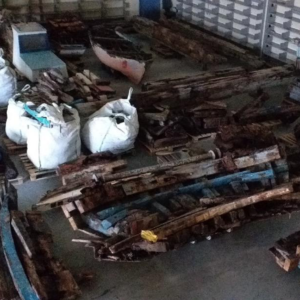
The wooden boats of the 20th century are the last tangible evidence of a centuries-old shipbuilding tradition in the Eastern Mediterranean. The recording of their structural, functional and social characteristics is imperative in order to preserve and study their shipbuilding technology and the historical context in which they were created and used. Through the documentation of a boat’s architecture, its equipment and gear, but also the personal belongings of its crew, we reconstruct the biography of a nautical monument.
Agios Spyridon, a 24-meter-long vessel, was one of the last wooden fishing trawlers of Cyprus. It was built in Crete in 1950 and belonged to the karavοskaro type, with an elliptical stern. It was registered in Cyprus in 1954 and was used as a trawler along the coasts of the island and the eastern Mediterranean until 2004, when it was decommissioned according to EU Fishing Policy. The boat was placed on dry land, close to the Latchi marina, Polis Chrysochous, to function as a monument of the local maritime heritage.
Recording AGIOS SPYRIDON (2018 – 2019)
Despite the initial plans, the boat was left without any protection for 15 years, which resulted in its gradual deterioration. In 2017, its poor condition and the high maintenance cost led the Council of the Polis Chrysochous Municipality to the decision that it should be destroyed for safety and aesthetic reasons, despite all efforts by the MARELab to the contrary.
In February 2018, the MARELab in collaboration with the Cyprus Institute, took the initiative to organize an initial documentation project, with the use of conventional and digital survey methods: 3D recording, with Laser Scanning and drone-led Photogrammetry. The initiative was supported by the Department of Fisheries and Marine Research and the Municipality of Polis Chrysochous. An ethnographic study was also initiated, to delve into the historical context of the vessel and explore its ties to the history of fishing in the region.
Unable to convince the local authorities and any potential sponsors to save AGIOS SPYRIDON, the controlled destruction and full recording of the vessel seemed the only way to mitigate the consequences of its loss. To this end, the MARELab-led project AGIOS SPYRIDON: Comprehensive Documentation, Recording and Digital Preservation commenced in 2019, funded by the Honor Frost Foundation, with contributions from the Municipality of Polis Chrysochous and the Cypriot Department of Fisheries and Marine Research. Dr Kostas Damianidis (architect, specialist in vernacular shipbuilding) and his associates undertook the documentation of the ship’s construction, whereas the Cyprus Institute completed the 3D recording of the vessel.
The main objectives of the project were: (i) to preserve the structural, morphological and technological characteristics of the wooden vessel, through digital documentation before and during its controlled dismantling, (ii) to raise awareness about the preservation of nautical heritage, (iii) to preserve as much of its memory as possible, by inviting artists and craftspeople to give a second life to pieces of the hull cut during the controlled destruction, and (iv) to preserve and further study, parts of the wooden structure of the boat and its equipment.
The Mare Cyprium application
Thanks to a large amount of video-photographic and 3D data generated during the AGIOS SPYRIDON Project, it was possible to build a complete 3D reconstruction of the boat. The Mare Cyprium project capitalized on this model, and created a platform with which interested users could advance their understanding of shipbuilding technology. A 3D glossary of shipbuilding terms was created in two languages: English and Greek.
The application is composed of three viewports and a search bar. Searching for a specific term will bring up its definition based on published glossaries and activate the three viewports.
– The top viewport will display a 3D model of the searched feature, superimposed on a longitudinal section of the photogrammetric model of the AGIOS SPYRIDON trawler.
– The bottom left viewport shows the searched feature within the boat, annotated on the 2D boatbuilding plans of the Agios Spyridon.
– The bottom right viewport will either bring up the isolated 3D model of the feature, for closer inspection, or provide supplementary information through 3D models created after figures from J. Richard Steffy’s (2012) illustrated glossary.
For easier user access, the list of terms and definitions, is also available separately from the application.
Bibliography:
Adams, J.R. (2013). A maritime archaeology of ships. Innovation and social change in late medieval and early modern Europe. Oxford: Oxbow Books.
Δαμιανίδης, Κ. (1998). Ελληνική Παραδοσιακή Ναυπηγική / Greek Vernacular Boatbuilding. Αθήνα: Πολιτιστικό Τεχνολογικό Ίδρυμα ΕΤΒΑ.
Δαμιανίδης, Κ. (Ed.) (2014). ΝΑΥΣ. Πλοία και Ναυπηγική στον Ελληνικό Κόσμο. Αθήνα: Polaris.
Δαμιανίδης, Κ., Τζαβάρας, Γ., Παυλόπουλος, Γ., Πλυτάς, Α., Βλαβιανός, Ν., Αρμένης, Δ., και Ξινόγαλος, Μ. (2019). Τεύχος Εργασίας 1.1.14.4. Μελέτη αποκατάστασης περάματος ΑΓΙΟΣ ΓΕΩΡΓΙΟΣ. Σάμος:Πνευματικό Ίδρυμα Σάμου “Ν. Δημητρίου”.
Εμίλιο-Ιωαννίδου, Κ. (2014). Λεξικό Αρχαίων Ελληνικών Ναυτικών Όρων. Ερμηνευτικό–Ετυμολογικό–Εγκυκλοπαιδικό. Αθήνα:Historical Quest.
Παπαγγέλου, Ρ. (1991). Η γλώσσα των καραβιών. Αγγλοελληνικό, ελληνοαγγλικό, ελληνοελληνικό ναυτικό λεξικό με υπομνηματισμένα σχέδια. Αθήνα: Ωκεανίδα.
DMA Development
Software
The photogrammetric model was processed using Agisoft Metashape. All other 3D models were created using Autodesk 3ds Max, whilst Adobe Illustrator was used for annotating the 2D drawings of Agios Spyridon. Each viewport of the developed application required a separate 3D scene and exported .gltf file, all of which were done using Autodesk Maya and the Verge 3D plugin. Verge 3D and Adobe Dreamweaver were used in tandem to create the final interactive application.
Given Verge3D’s reliance on WebGL for rendering 3D graphics within web browsers, we highly recommend using Google Chrome for the best viewing experience when interacting with Mare Cyprium’s 3D web applications.
Acknowledgements
Constantinos Nicolaou
Konstantina Xanthopoulou
Jules Simpson
Further reading
Adams, J.R. (2013). A maritime archaeology of ships. Innovation and social change in late medieval and early modern Europe.Oxford: Oxbow Books.
Damianidis Κ. 1998. Greek Vernacular Boatbuilding. Αθήνα, Πολιτιστικό Τεχνολογικό Ίδρυμα ΕΤΒΑ, 2nd Edition (in Greek).
Wideson, R. (1992). Cyprus: Images of a Lifetime, Demetra Publications, Cyprus.
